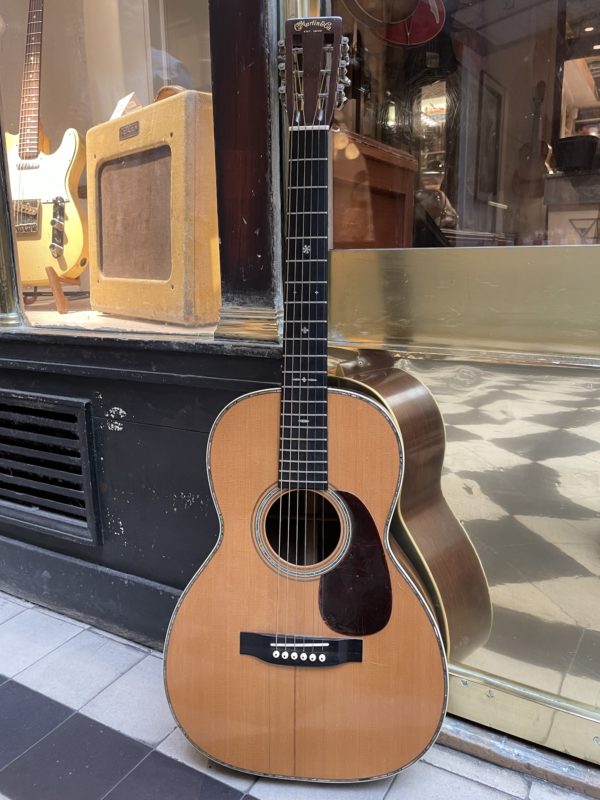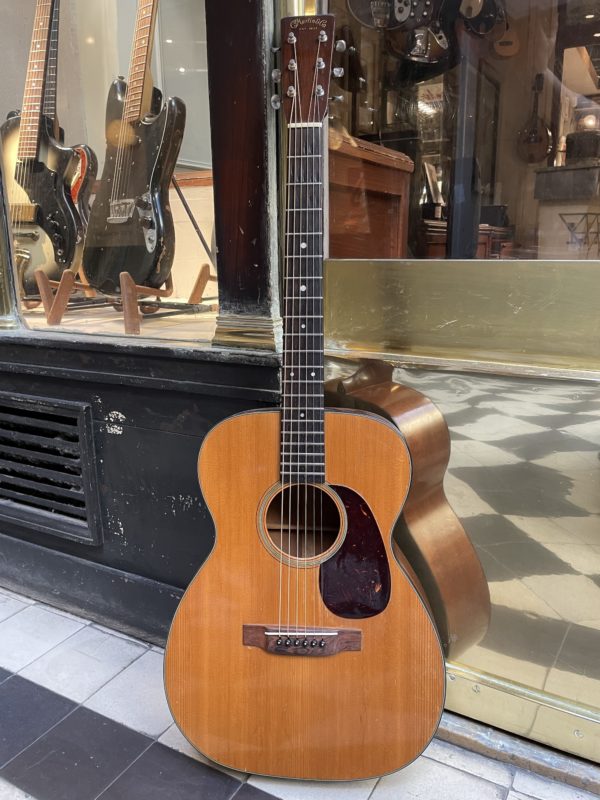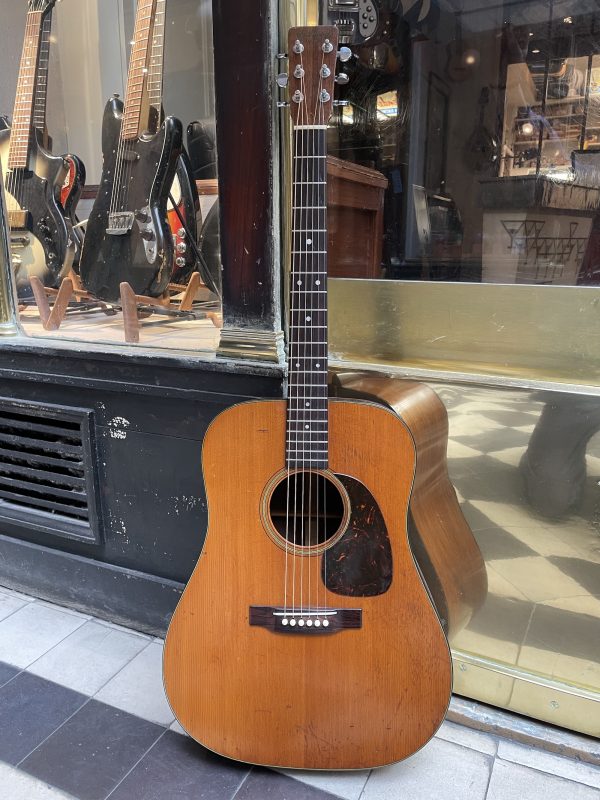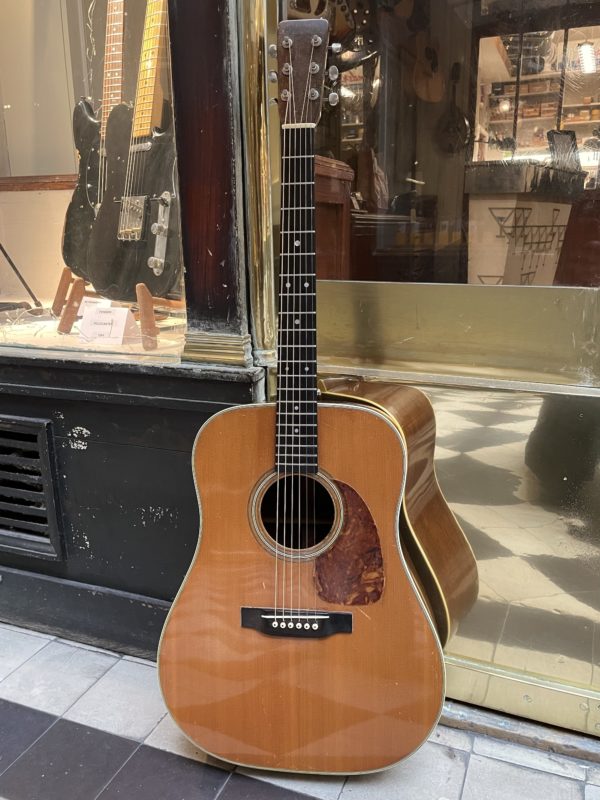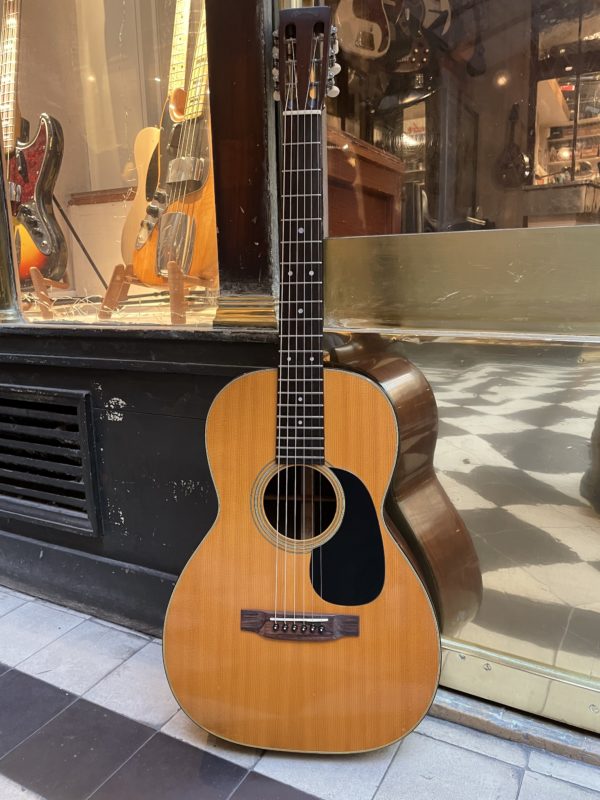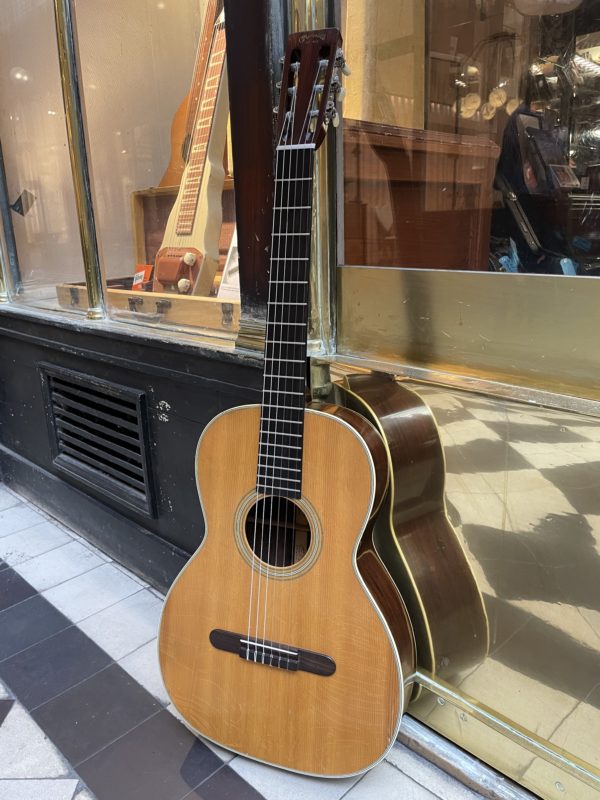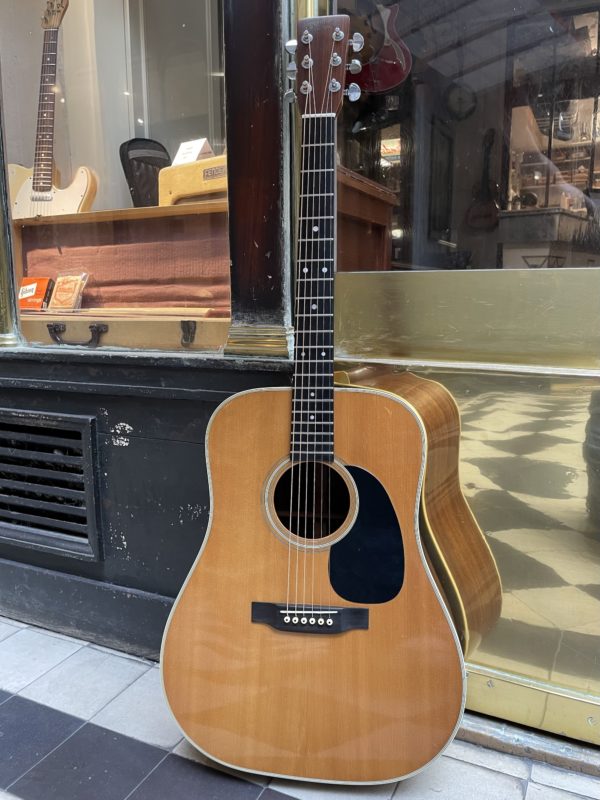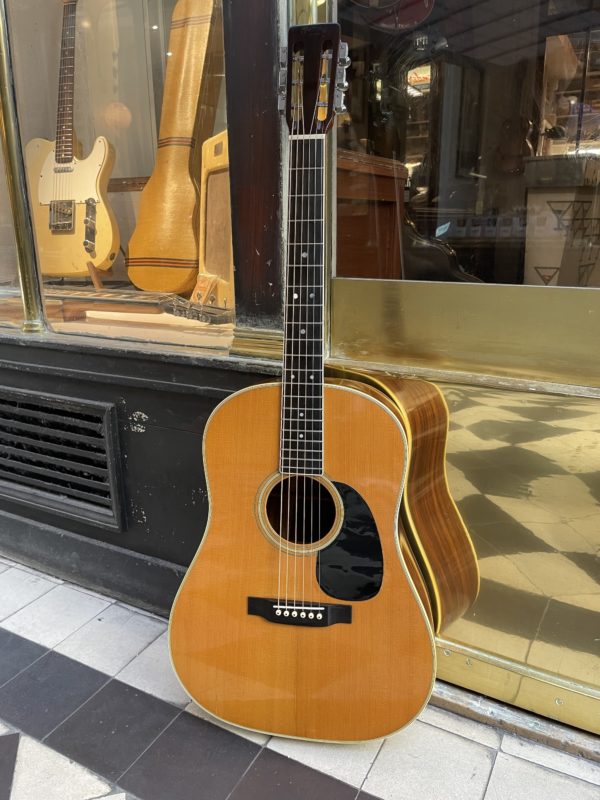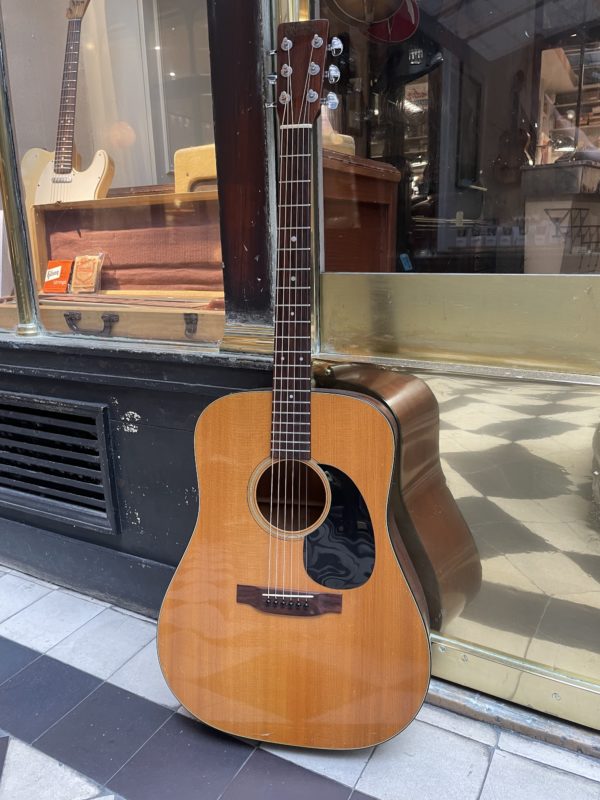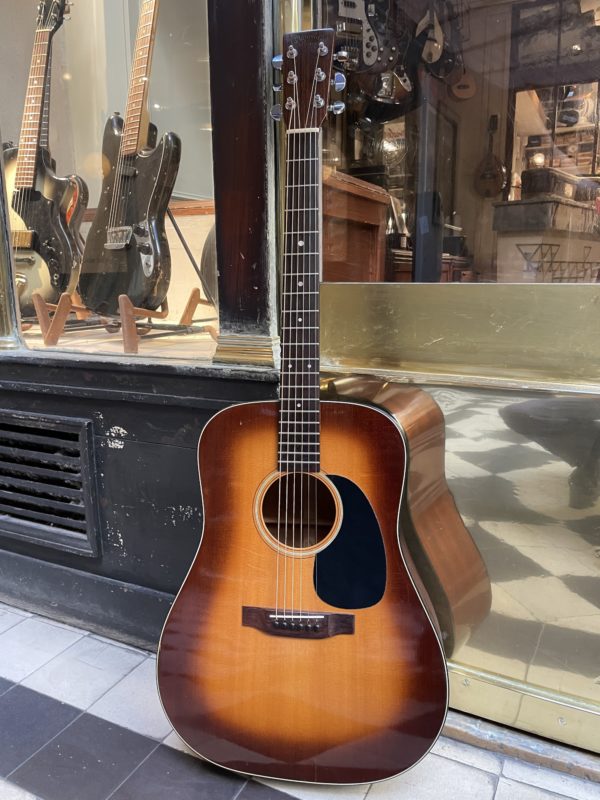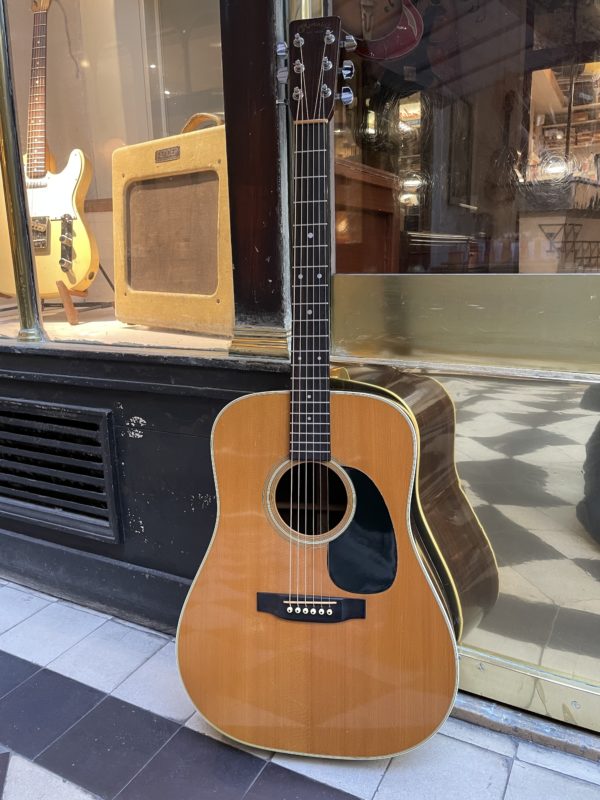Martin
Martin
MARTIN
Christian Friedrich Martin (1796-1873) was born in Germany near Dresden in Markneukirchen, a city which then concentrated a large pool of violin and guitar makers, including Johann Georg Martin, his own carpenter father, who introduced him to the violin craftsmanship. His real apprenticeship nevertheless took place in Austria between 1820 and 1826 under the eminent luthier Johann Georg Stauffer (1778-1853), who had lived in Vienna since 1800, and who was undoubtedly alongside Georg Ries and Johann Ertel one of the most influential German guitarists of the Romantic period.
The instruments of Johann Georg Stauffer, inspired in particular by virtuosos such as Luigi Legnani (1790-1877), then distinguished themselves from French models by adopting from the very beginning of the 19th century an added fingerboard and a general line which would be taken up by young C.F. Martin. Other J. G. Stauffer innovations adopted by C. F. Martin, such as the asymmetrical cone-shaped headstock with tuners in a row, the detachable screw-on neck or the cutaway, were later reused by other American electric guitar makers such as Paul Bigsby , Leo Fender or the Gibson company. These are just a few examples among others of the contribution of European violin making in the baggage of Christian Friedrich Martin. Back in the family workshop in his hometown, like many of his young colleagues, he decided to emigrate to the United States at the end of 1833 following an industrial dispute between the all-powerful guild of violin makers and simple artisans. It is interesting to note that it is this same corporatist ostracism that will bring to France – and more precisely to Paris – a good number of craftsmen from the south of Italy in the early 1920s. Forced to leave the city of Markneukirchen, it seems that the destination of the New World for Christian Friedrich Martin was motivated by his luthier friend Heinrich Anton Schatz who had preceded him in 1831. He first settled in New York where he opened a shop, indiscriminately selling guitars, sheet music, strings, but also wind instruments which, in addition to guitars, he repaired. He also works very quickly in partnership with local musicians, distributors and luthiers John Coupa, Charles Bruno, Heinrich Anton Schatz. Nevertheless, unsatisfied with life in New York, he again followed the example of Heinrich Anton Schatz and moved his business to Nazareth in 1838, in a Pennsylvania evoking German landscapes, thus joining a small Saxon community already established there.
It was during this period, in the years 1840-1850, that the sober and fine personality of the Martin guitars was defined, abandoning for a time only the rich mother-of-pearl decoration which did not correspond to the tastes of a Protestant clientele looking for simplicity and functionality, thus gradually setting themselves apart from Stauffer type models. In order to increase the sound volume of the guitar, the dimensions of the instruments with always very curved waists are enlarged – like the guitars of Antonio de Torres at the same time in Spain -, and the very effective “X” bracing consisting mainly of two braces crossed between the rosette and the bridge makes its appearance. When he died in 1873, Christian Friedrich Martin left behind a company that withstood the economic crisis before the Civil War and took advantage of the recovery of the guitar market during the North-South conflict. Christian Friedrich Martin today embodies the image of the founding father of the modern acoustic guitar in the collective imagination even if he is not the inventor and did not experience the era of metal strings! It was to his grandson Frank Henry Martin (1866-1948) that the company Martin & Co owes most of its famous models of the years 1920-1940 and the considerable development of the company family. It has consequently grown over time in Nazareth and was until very recently managed by a direct descendant of the family in the person of Christian Friedrich Martin (1955-), the fourth of the name.
If in everyone’s mindMartin is now synonymous with acoustic guitar with steel strings, it should be remembered that it was not until 1900 that the company began to set up, on special order only, a few models with steel strings, either in its own name or under the name of the brands of its distributors. What’s more, it is common today to come across Martin guitars originally designed for gut strings which were later fitted with steel strings, some of them have sometimes even been modified for this purpose. In short, it must be kept in mind that all Martin guitars before the 1920s were designed for gut string set up.
Precisely, it was not until 1922, quite late in terms of general competition, that a first Martin 2-17 model – offering the metal string option appeared in the Martin catalog . The long absence of Martin & Co from the steel-string guitar field can be explained as follows: during the past few years, the company’s attention and efforts had naturally turned towards the very popular and lucrative mandolin; then, the company which was considered above all else as the largest manufacturer of high quality gut-string guitars, did not see fit to compete for any place in the nascent steel-string guitar market. However, the era of the elegant little guitars with gut strings was coming to an end in the 1920s and these instruments no longer concerned but a more and more restricted audience who would soon turn to the new Spanish models. It is therefore with a delay and by erasing a certain conservatism that Frank Henry Martin (1866-1948) sees in the metal string the possibility of redirecting his guitar production. He thus responds to the popularity of Hawaiian music and in turn provides a solution to the pressing demand for sound volume from guitarists whose ranks are then greatly enlarged with banjo players in search of new instruments.
Be that as it may, and this is where the talent of the ancestor C. F. Martin comes in, the first models with steel strings are identical in their format and design to those dedicated to guts. All contain the typical “X” bracing which is particularly well suited to the tension of metal strings with lighter gauges. The sizes offered by Martin guitars at that time were as follows: the smaller size 2 and size 1; size 1 of 48 x 34.4 cm; the size 0 of 48.5 x 34.3 cm; the size 00 of 48 x 36 cm; and finally the largest size is then the Martin 000 with 49 x 38 cm, except for special models such as the Martin size 5, all the models described above are nowadays the smallest sizes offered in the Martin catalogue.
The name of the Martin models is not cabalistic: the number preceding the dash designates the size of the body and the number after it refers to the degree of finish. The Martin 2-27 model is more ornate than the Martin 2-17, but it is structurally the same instrument: the top is spruce; the sides are in Rio rosewood; the neck is mahogany with an ebony fingerboard, like the glued bridge with studs and pyramidal ends; a perforated and added head has a triangular joint; 27 finishes include ivory body binding accented with multi-coloured chevrons; an ivory-edged fingerboard and a mother-of-pearl encrusted rosette; the German import mechanics work in reverse. The entire range of Martin sizes is thus declined around finishes which become increasingly rich until the crisis of 1929 when the model Martin 2-17, ten points below the 27, will be constructed entirely of mahogany with a minimum of decoration. The most imposing model Martin 000, using the same wood species as the famous Martin 2-27, was introduced in 1902 and was one of the first to be offered in steel strings. However, it was not until 1928 that this version became standard. It is the starting point for a new generation of strong guitars with reinforced “X” bracing. This basic concept created eighty years earlier by C. F. Martin is the major technological contribution around which the Martin company still manufactures these legendary guitars: Martin 0, Martin 00, Martin 000, Martin OM, Martin D-sized dreadnoughts (18 for mahogany, 28 for rosewood), Martin D-35, Martin D-41, Martin D-45.


